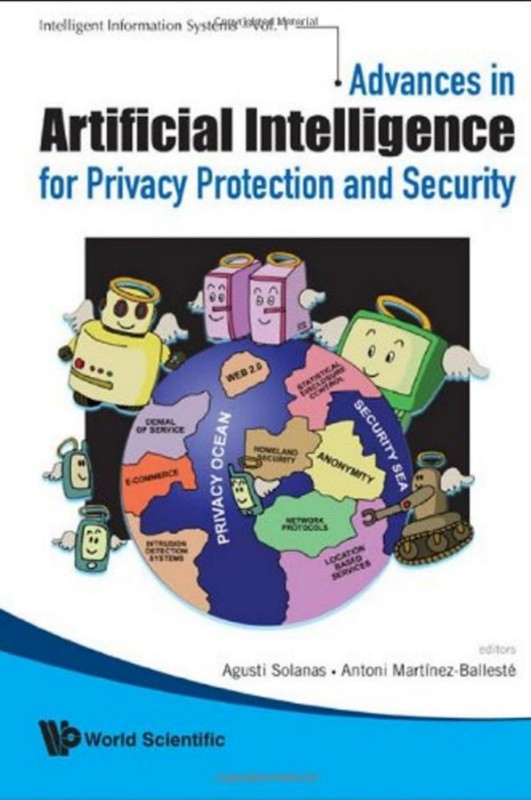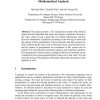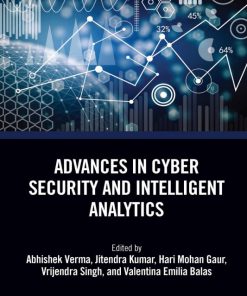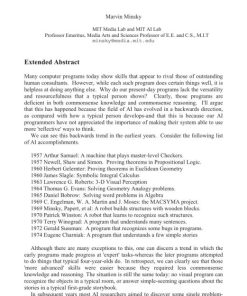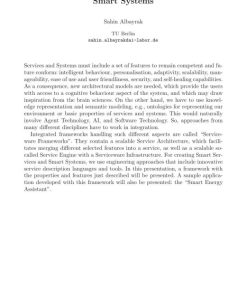Advances in Artificial Intelligent for Privacy Protection and Security 1st Edition by Agusti Solanas, Antoni Martinez Balleste ISBN 9789812790330 9812790330
$50.00 Original price was: $50.00.$25.00Current price is: $25.00.
Authors:Advances in artificial intelligence for privacy protection; security-World Scientific (2010) , Author sort:protection, Advances in artificial intelligence for privacy & Scientific, security-World
Advances in Artificial Intelligent for Privacy Protection and Security 1st Edition by Agusti Solanas, Antoni Martinez Balleste – Ebook PDF Instant Download/Delivery. 9789812790330 ,9812790330
Full download Advances in Artificial Intelligent for Privacy Protection and Security 1st Edition after payment
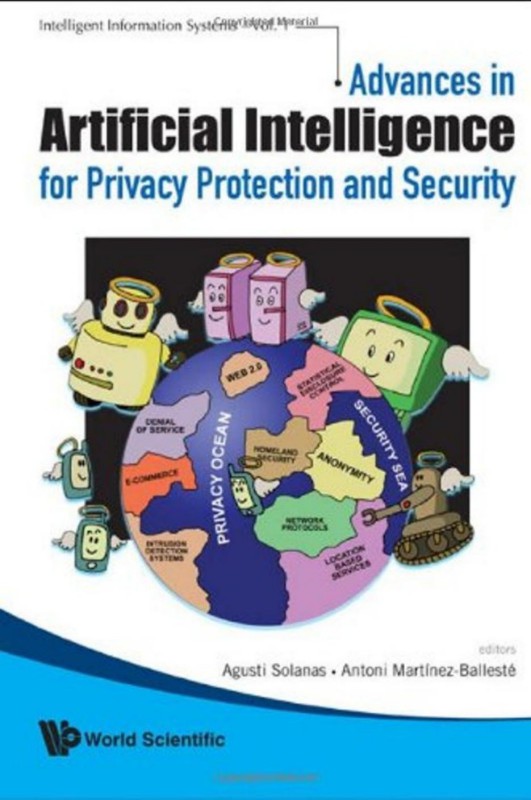
Product details:
ISBN 10: 9812790330
ISBN 13: 9789812790330
Author: Agusti Solanas, Antoni Martinez Balleste
Advances in Artificial Intelligent for Privacy Protection and Security 1st Edition Table of contents:
1. Introduction A. Solanas and A. Mart¶³nez-Ballest¶e
1.1. Organization of the book
References
PART 1: A Brief Introduction to Privacy and Security
2. An Introduction to Privacy Aspects of Information and Communication Technologies A. Martinez-Ball
Contents
2.1. Introduction
2.2. Privacy and the Internet
2.2.1. Monitoring User Activity
2.2.1.1. Tracking Cookies
2.2.1.2. Spyware
2.2.1.3. Social Engineering Attacks
2.2.2. Privacy in Modern Web Services
2.2.2.1. Privacy in Social Networks
2.2.2.2. Privacy in E-Commerce
2.2.3. The Big Brothers of Internet
2.3. Privacy in Databases
2.3.1. Privacy of the Respondents
2.3.2. User Privacy
2.4. Privacy in Ubiquitous Computing
2.4.1. Location-Based Services
2.4.1.1. TTP-Based Schemes
2.4.1.2. TTP-Free Proposals
2.4.2. Radio-Frequency Identi¯cation
2.5. Conclusions
Disclaimer and Acknowledgements
References
3. An Overview of Information Security A. Ribagorda Garnacho, A. I. Gonz¶alez-Tablas Ferreres, A. A
Contents
3.1. Introduction
3.2. Vulnerabilities
3.3. Threats
3.4. Countermeasures
3.5. Authentication mechanisms
3.5.1. Something you know
3.5.2. Something you are
3.5.3. Something you have
3.6. Access control mechanisms
3.6.1. Access control policies
3.6.2. Access control models
3.6.2.1. Access matrix model
3.6.2.2. Mandatory access control models
3.7. Data encipherment mechanisms
3.7.1. Attacks
3.7.2. Cryptosystems classification
3.7.2.1. Substitution, transposition and product ciphers
3.7.2.2. Symmetric or secret key cryptosystems
3.7.2.3. Asymmetric or public key cryptosystems
3.7.3. Stream and block cryptosystems
3.8. Digital signature mechanism
3.9. Digital certificates
3.10. Audit logs
3.11. Physical security
3.11.1. Intrusion prevention
3.11.2. Electromagnetic emanations
3.11.3. Physical access control systems
References
PART 2: Privacy Protection by means of Arti¯cial Intelligence
4. Data Mining in Large Databases | Strategies for Managing the Trade-O® Between Societal Bene¯t a
Contents
4.1. Introduction
4.2. Examples of data-collecting institutions and data users
4.3. Strategies for controlling privacy
4.3.1. Input control and masked data sets
4.3.2. Output control
4.3.3. Query auditing
4.3.5. Measuring privacy and disclosure risk in published outputs
4.4. Measures of the utility of published data sets and outputs
4.5. Conclusion
References
5. Desemantization for Numerical Microdata Anonymization J. Pont-Tuset, J. Nin, P. Medrano-Gracia, J
Contents
5.1. Introduction
5.2. Background and State of the Art
5.2.1. Microdata protection scenario
5.2.2. Information loss and disclosure risk
5.2.3. State of the art in microdata anonymization methods
5.2.3.1. Rank swapping
5.2.3.2. Microaggregation
5.2.4. Artificial neural networks
5.2.4.1. The backpropagation algorithm
5.3. A New Desemantization Methodology
5.4. Data Preprocessing
5.4.1. Vectorization
5.4.2. Sorting
5.4.3. Partitioning
5.4.4. Normalization
5.4.5. Re-sorting and re-normalization
5.5. Data Fitting
5.5.1. Mean value model
5.5.2. Polynomial regression model
5.5.3. Neural networks
5.5.3.1. Normalization range
5.5.3.2. Learning process
5.5.3.3. Data protection
5.6. Experiments
5.6.1. Data sets description
5.6.1.1. The Census data set
5.6.1.2. The EIA data set
5.6.1.3. The Water-treatment data set
5.6.2. Mic1D-k evaluation
5.6.3. PoROP-k evaluation
5.6.4. ONN evaluation
5.7. Conclusions
Acknowledgments
References
6. Multi-Objective Evolutionary Optimization in Statistical Disclosure Control R. Dewri, I. Ray, I.
Contents
6.1. Introduction
6.2. Multi-objective Optimization
6.3. Statistical Disclosure Control
6.3.1. Preserving privacy
6.3.2. Estimating information loss
6.4. Evolutionary Optimization
6.4.1. Multi-objective analysis
6.4.1.1. In the absence of suppression
6.4.1.2. With pre-specified suppression tolerance
6.4.1.3. For comprehensive overview
6.4.2. Solution encoding
6.4.3. Non-dominated Sorting Genetic Algorithm-II
6.4.4. Crossover for constrained attributes
6.4.5. Population initialization
6.5. Some Empirical Results
6.6. Summary
Acknowledgment
References
7. On the Definition of Cluster-Speci¯c Information Loss Measures V. Torra
Contents
7.1. Introduction
7.2. Preliminaries
7.2.1. Protection methods
7.2.2. Generic information loss measures
7.2.3. Fuzzy sets, fuzzy partitions, and fuzzy clustering
7.3. Information loss measures for clustering
7.3.1. Comparison of crisp clusters
7.3.2. Comparison of fuzzy clusters
7.3.3. Extensions using intuitionistic fuzzy sets
7.4. Conclusions and future work
Acknowledgments
References
8. Privacy Preserving and Use of Medical Information in a Multiagent System K. Gibert, A. Valls, L.
Contents
8.1. Introduction
8.2. Privacy preserving and security in a distributed platform for medical domains
8.3. Identification and authentication
8.4. Authorization and information access rights
8.4.1. Ontologies
8.4.2. Actor Profile Ontologies
8.5. Multiagent system
8.6. Intermediate layer for knowledge-interface communications
8.7. Private data protection
8.8. A real case: the K4Care project
8.8.1. The K4Care model
8.8.2. The knowledge management
8.8.3. The K4Care system architecture
8.9. Discussion
References
PART 3: Security by means of Artificial Intelligence
9. Perimeter Security on Noise-Robust Vehicle Detection Using Nonlinear Hebbian Learning B. Lu, A. D
Contents
9.1. Introduction
9.2. Description of the Proposed System
9.3. Unsupervised Nonlinear Hebbian Learning
9.3.1. Linear Hebbian Learning
9.3.2. Nonlinear Hebbian Learning
9.3.3. Nonlinear Activation Function
9.4. Real-time Field Testing Results
9.5. Simulation Results
9.5.1. Decision I: Vehicle vs. Non-vehicle Recognition
9.5.2. Decision II: Vehicle Type Identi¯cation
9.6. Conclusion and Discussion
Acknowledgment
References
10. Texture-Based Approach for Computer Vision Systems in Autonomous Vehicles D. Puig, J. Melendez a
Contents
10.1. Introduction
10.2. Background
10.3. Per-Pixel Texture Classifier
10.3.1. Feature Extraction
10.3.2. Texture Model Reduction
10.3.3. K-Nearest Neighbors Classification
10.3.4. Post-Processing
10.4. Automatic Parameter Selection
10.5. Experimental Results
10.6. Conclusions and Future Work
Acknowledgements
References
11. An Aggression Detection System for the Train Compartment Z. Yang, S. Fitrianie, D. Datcu and L.
Contents
11.1. Introduction
11.2. Related work
11.2.1. Automated aggression detection
11.2.2. Human based event reporting
11.3. System overview
11.4. Knowledge representation
11.4.1. Motivation
11.4.2. Ontology overview
11.4.3. The static context
11.4.4. Dynamic context
11.5. Automated aggression detection
11.5.1. Approach
11.5.2. Fusion and classification
11.5.2.1. Facial expression recognition
11.5.2.2. Emotion recognition from speech
11.5.2.3. Results for the extraction of emotion-related features
11.5.2.4. Event and activity recognition
11.5.3. Reasoning model
11.5.4. Implementation
11.6. Icon-based reporting tool on smart phones
11.6.1. The icon interface
11.6.2. System knowledge representation
11.7. Communication framework
11.8. The operator room
11.8.1. Icon language message interpreter
11.8.1.1. Multiple messages processor
11.9. Evaluation
11.10. Conclusions and future work
References
12. K-Means Clustering for Content-Based Document Management in Intelligence S. Decherchi, P. Gastal
Contents
12.1. Introduction
12.2. Document Clustering in Text Mining for Security Applications
12.2.1. Document indexing
12.2.2. Document clustering
12.3. Hybrid Approach to k-Means Clustering
12.3.1. Document distance measure
12.3.1.1. Algorithm for generating v00(D)
12.3.2. Kernel k-means
12.3.2.1. The feature-space version of k-means clustering
12.4. The Document-Clustering Framework
12.4.1. The document-clustering algorithm
12.4.1.1. The document-clustering procedure
12.4.2. Dimension reduction for document clustering by using random projections
12.4.3. Computational complexity
12.5. Experimental Results
12.5.1. Reuters-21578
12.5.2. Enron dataset
12.6. Conclusions
References
13. Genetic Algorithms for Designing Network Security Protocols L. Zarza, J. Forn¶e, J. Pegueroles
Contents
13.1. Introduction
13.2. Genetic algorithms
13.2.1. Definitions and terminology
13.2.2. General characteristics of genetic algorithms
13.2.3. Search space
13.2.4. Operation of a simple genetic algorithm
13.2.4.1. Selection phase
13.2.4.2. Modification phase
13.2.4.3. Evaluation phase
13.2.5. Genetic algorithms and learning
13.3. Security protocols
13.3.1. Conventions
13.4. State of art
13.4.1. State exploration
13.4.2. Belief logic
13.4.3. Genetic programming
13.5. Genome definition and interpretation
13.5.1. The binary sequence
13.5.1.1. Sender and receiver
13.5.1.2. Data
13.5.1.3. Keys
13.5.1.4. Structure
13.5.2. From the binary sequence to the genome
13.5.2.1. Genome structure
13.5.2.2. Genome interpretation
13.5.3. Analysis for genome construction
13.6. Security protocol evaluation: towards the ¯tness function
13.6.1. Aspects to evaluate
13.6.1.1. Number of goals achieved
13.6.1.2. Leaked data
13.6.1.3. Number of data acquired redundantly
13.6.1.4. Data acquired by keys received later than the data
13.6.1.5. Number of messages in the protocol
13.6.1.6. Transmission of large and small messages
13.6.1.7. Public and symmetric keys
13.6.1.8. Encoding large and small messages
13.6.2. Detecting the elements to be evaluated
13.6.3. Setting the weight of each element to be evaluated
13.6.4. Definition of proper values for weights
13.6.5. Applied values and their results
13.6.5.1. Example 1
13.6.5.2. Example 2
13.7. Conclusions
References
14. Evolving Strategy-Based Cooperation in Wireless Mobile Ad Hoc Networks M. Seredynski, P. Bouvry
Contents
14.1. Introduction
14.2. Cooperation enforcement system
14.2.1. Assumptions and performance metrics
14.2.2. Reputation system
14.2.3. Selection of best paths: path rating mechanism
14.2.4. Response mechanism: forwarding strategy
14.2.5. Packet Forwarding Game
14.2.6. Evaluation of strategies
14.2.7. Scheme of the evolutionary approach for analysis of behavior of the network
14.2.8. Underlying mechanisms
14.3. Computational experiments
14.3.1. Types of players in the NTS
14.3.2. Conditions of experiments
14.3.3. Results
14.4. Conclusions
People also search for Advances in Artificial Intelligent for Privacy Protection and Security 1st Edition:
artificial intelligence privacy
artificial intelligence privacy laws
artificial intelligence privacy issues
artificial intelligence privacy risks

